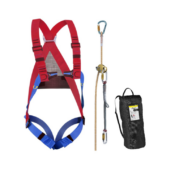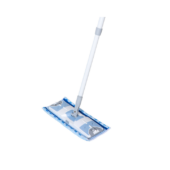Purchase order tracking is a systematic approach to managing and monitoring of purchase orders from the moment they are generated until they are fulfilled.
It is an essential part of the company’s activities that guarantees orders are processed, finished, and sent out on time and precisely.
Being able to expand the purchase order tracking system is one of the most important things for a company that is growing. This has a direct effect on financial auditing, compliance, and operating efficiency. These improvements can begin at the point of original purchase request, or intake.
In initial use cases, intake has the potential to increase spend under management by 80%, or it can exceed the standard ceiling of 60%–70% spend under management, reaching 90%+. This results in potential savings of tens of millions merely by concentrating on adoption, assuming an average of 9% savings for each new dollar brought under procurement control.
Nick Heinzmann, Head of Research at Zip
The purchase order process, tracking purchase orders, scaling your PO tracking system as your business grows, best practices, potential pitfalls, and how procurement orchestration software Zip can help expedite your PO and approval process at any stage of growth are all covered in this article.
What is a Purchase Order tracking system?
A PO tracking system is a systematic, technologically advanced way to monitor and control every purchase order’s journey inside an organisation.
Previously, this process required each purchase order to be created in at least two copies—one for internal use and the other to be sent to the supplier. The majority of the procedure was done by hand.
While this approach initially contributed to maintaining thorough records for operational efficiency, there are now more efficient methods available.
Thanks to the progress in supply chain management and procurement platforms, purchase order tracking software has undergone significant improvements. It now automates and streamlines processes, re resulting in reduced errors and manual labour throughout fully-orchestrated procurement workflows
What is Procurement Orchestration? With the release of our newest free ebook, “The Executive Guide to Procurement Orchestration,” discover what will be possible in the future of procurement. Get it now!
How can I keep track of a purchase order method better?
There are several techniques to track purchase orders, each with their own advantages and disadvantages. There are several methods for managing buy orders, purchase requests, and purchase requisitions.
Excel and financial spreadsheets
Companies track and manage their purchase orders using spreadsheet programmes like Excel all the time. These tools allow the development or purchase of managed and digitally storable PO tracking templates. Because Excel is so flexible and user-friendly, many small and medium-sized companies choose it.
Pros:
- Accessibility: Since Excel is a widely used application that most users are comfortable with, small businesses can easily choose to use it.
- Customizability: By tailoring a buy order template to specific business requirements, it is possible to increase the flexibility of purchase order tracking and reporting.
- Cost-effectiveness: For businesses with a small number of purchase orders, Excel provides a cost-effective option without needing the purchase of extra software.
Cons:
- Prone to human error: Errors in manual data entry could lead to issues with financial reporting and tracking.
- Scalability issues: As a business grows, spreadsheet-based purchase order management can become laborious and time-consuming.
- Lack of real-time updates: Since Excel does not offer automated notifications or real-time updates, the procurement process could take longer.
Automated PO management systems
Automation of purchase order management systems is a significant advancement for businesses trying to increase the precision and effectiveness of their tracking. These systems simplify the tracking process with real-time updates, automated workflows for purchase order approval, and robust reporting tools.
Pros:
Efficiency: By automating purchase order tracking, the procurement process can be streamlined and less time and effort is needed.
Accuracy: Data integrity and financial accuracy are ensured by automated systems, which reduce the possibility of human error.
Real-time visibility: Decision-making and responsiveness are enhanced when stakeholders have instant access to the status of purchase orders.
Cons:
Cost of implementation: Smaller organisations may find it prohibitive to spend upfront in automated technologies.
Learning curve: Staff training may be necessary when implementing a new system, which could affect output during the transition.
Complexity for basic needs: An automated system might not be required just yet for companies with modest procurement requirements
.
Automated solutions for managing purchase orders efficiently tackle and resolve a range of essential issues related to tracking purchase orders.
By implementing standardised rules and procedures for purchasing, platforms like Zip assist in maintaining compliance and enhancing control over the procurement process.
Intake-to-Pay has a specific focus on making the initial stages of procurement more efficient, addressing problems early on and making the procurement process more streamlined and accessible.
Purchase Order tracking best practices
Following a specified set of best practices is necessary to achieve success in purchase order tracking. These rules guarantee that purchase orders are processed accurately, quickly, and in accordance with organisational policies. They also expedite procurement procedures.
The following are recommended approaches for improving your po tracker and associated tracking techniques:
Develop a consistent Intake process
One great way to ensure a successful purchase order is to have just one point of entry at intake. The centralization of the procurement process makes navigation easier for department heads and other stakeholders. This coherent approach guarantees that every purchase is suitable and authorised in compliance with company policies, minimises misunderstanding, and speeds up requests..
Establish clear tracking processes
Clear standards for file systems and purchase order numbers will put you well on your road to success. An efficient system enables quick retrieval, auditing, and tracking of the PO lifetime, minimising the chances of mishandling PO numbers and losing critical documents.
This procedure can be enhanced further by incorporating a purchase order template, a buy order tracker, and other standardised forms.. It should go without saying, but make sure your PO process tracking system has a means of monitoring the order date, order number, order status, terms of payment, and delivery date
Utilize online tools, as needed
Stakeholders may efficiently monitor and manage orders from any location with the help of online tools and software solutions that provide real-time access to electronic purchase order data. These systems typically offer a variety of features, such as electronic signatures, alerts, and approval processes. Through the optimisation of procurement procedures, these features contribute to improved efficiency and cost reduction.
Consistently update and review Purchase Orders
Consistently reviewing and updating the status of purchase orders helps to quickly identify and resolve any inconsistencies or issues. This procedure guarantees the precision of procurement records and the efficient management of inventory and suppliers through the monitoring of purchase orders.
Implement automation
Using automation technology can significantly reduce the effort required to track purchase orders. These technologies have the potential to revolutionise procurement processes, enhancing their efficiency, reducing errors, and adapting to evolving corporate requirements.
Common Purchase Order tracking pain points
Even when businesses follow the best practices, they often run into a number of problems that make it harder for their purchase order tracking systems to work well:
Spend plateaus caused by poor integrations
Problems connecting ERPs and other tools for buying things can cause spending to stop, especially if the systems aren’t made to handle service spending or have bad ways of taking in new customers. These restrictions can make it harder to see and manage how much is spent on buying, especially when using old-fashioned purchase orders that were not made for modern systems.
Opportunities for human error
When tasks are performed manually, errors are inevitable. These errors can include data entry mistakes, misinterpretation of data, or the loss of paper records. These errors can lead to financial issues and non-compliance, but fortunately, utilising PO software can effectively resolve these issues.
Tedious manual tasks
Tracking purchase orders manually can be quite time-consuming as it involves tasks such as data entry, order verification, and paperwork organisation. Creating purchase orders manually can be a time-consuming and costly process, diverting focus from more important purchasing activities. You should look into more up-to-date ways to automate these tasks.
Process bottlenecks
Approval workflows, document processing, and contact with suppliers often hit bottlenecks, which slows down the procurement cycle and lowers the overall efficiency of operations.
Inconsistent tracking processes
Lack of standardization in purchase order tracking can result in inconsistent processes across teams, making it difficult for your purchasing department to maintain control and visibility over procurement activities.
Inaccurate data
If the data in the buy order system is wrong or out of date, it can cause orders to be placed incorrectly, inventory to not match, and financial problems.
Costly
Tracking purchase orders inefficiently can be expensive because it takes more time and money to fix mistakes, deal with inventory problems, and settle disagreements with suppliers.
What you should look for in a system to track purchases?
It is important to think about your goals and the problems you want to solve when choosing the right purchase order tracking solution. There are great options on the market today that can help businesses of all sizes with their modern procurement needs.
Simple Intake-to-Procure process: An easy-to-use interface that makes the whole procurement process simpler, from making a request to getting permission and placing an order, increases adoption and compliance.
3-Way Matching: This feature makes sure that invoices, receipts, and buy orders all match. This helps stop fraud and overpayments.
Real-time reporting and tracking: Access to real-time data enables stakeholders to monitor the status of orders, manage inventory more effectively, and make informed decisions.
Role-based permissions: Using role-based access controls makes sure that only authorised people can safely manage and view sensitive procurement data.
Collaboration with suppliers: Tools that let you talk to and work together with suppliers directly can speed up negotiations, solve problems quickly, and build better relationships with suppliers.
AI-powered insights and analytics: Leveraging artificial intelligence to analyze procurement data can uncover trends, identify savings opportunities, and inform strategic decisions.
By using these best practices and features in your procurement strategy, you can get around the common problems that come up with tracking purchase orders, make your procurement process more efficient, and set your company up for long-term, scalable success.

















